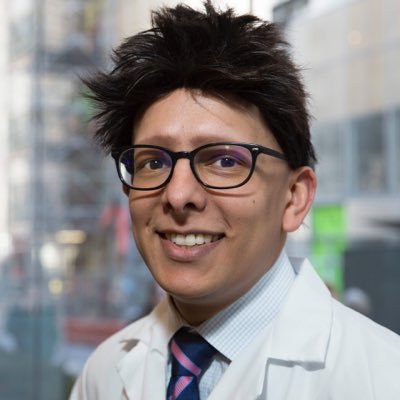
Dr. Fred Pelzman: We want to welcome you to Weill Cornell Medicine and have you tell us a little about what brought you here and your research, and introduce you to the Weill Cornell Community.
Dr. Parag Goyal: Thanks so much for the opportunity to chat a bit today. I feel very fortunate to have the opportunity to be here at Weill Cornell Medicine. I’ve been at Cornell since 2010, when I first arrived as an intern in Internal Medicine. I completed my residency in Internal Medicine here in 2013, and stayed on as a Cardiovascular Medicine fellow from 2013-2016, and then completed an Advanced Heart Failure fellowship here at Weill Cornell Medicine in 2016-2017 under Dr. Evelyn Horn. While completing my Advanced Heart Failure fellowship, I also completed a Master’s of Science in Clinical Epidemiology and Health Services Research under the mentorship of Dr. Mary Charlson. I have long been interested in a career in academic medicine, where I could be triple threat as a clinician, researcher, and teacher. I was thrilled to stay on as faculty after completing my training this past summer 2017 because I felt that this was the environment where I could actually make this goal become a reality. I currently hold a faculty position as an Assistant Professor in both the Division of General Internal and the Division of Cardiology. Through this unique set-up, I have the opportunity to provide clinical care in the Coronary Care Unit (and soon my new HFpEF program), conduct health services research in the Geriatric Cardiology space through funding from the National Institute on Aging, and teach in both the clinical and research settings.
Dr. Pelzman: How does it feel working with primary care folks?
Dr. Goyal: Working so closely with primary care really enriches my perspective when it comes to caring for patients. As a heart failure doctor, I’m a subspecialist (some call me a “super-subspecialist” as I did a heart failure fellowship after my cardiology fellowship). But I don’t just treat heart failure; I treat patients, who have heart failure. And as anyone who has cared for patients with heart failure knows, heart failure is almost never their only medical problem. So in addition to managing their heart failure, its also incredibly important to manage their other conditions—which not only include cardiovascular conditions like coronary artery disease and atrial fibrillation, but also non-cardiovascular conditions like lung disease and kidney disease. Of course, none of this occurs in a vacuum; so it’s also really important to consider the milieu in which these conditions exist. In other words, thinking about psychological processes and the social environment are also incredibly important. No one knows this better than the primary care docs. So having the opportunity to work with and learn from primary care physicians has really been a wonderful experience. Working with the primary care folks has served to further strengthen my belief that the future of patient care will be highly dependent on successful partnerships between subspecialists like myself and the primary care docs. Hopefully my new HFpEF program, which will start here at Cornell this Spring, can embody a little bit of this.
Dr. Pelzman: We’re on the 20th floor of the Baker building here. It’s a long ride up. Give me your elevator pitch of what you hope to accomplish here at Cornell.
Dr. Goyal: As a heart failure cardiologist and health services researcher with a particular interest in caring for the geriatric population, I aim to combine my unique skillsets to develop a new HFpEF (heart failure with preserved ejection fraction) program that can provide high-quality cutting-edge care to patients with this oft-overlooked subtype of heart failure, as well as contribute to the development of novel strategies to improve outcomes of this highly-vulnerable population. Within the supportive environment of Weill Cornell, and with mentorship from visionary leaders like Monika Safford, Mark Lachs, and Evelyn Horn, I look forward to making substantial contributions to the lives of my patients, the institution, and the broader scientific community.

